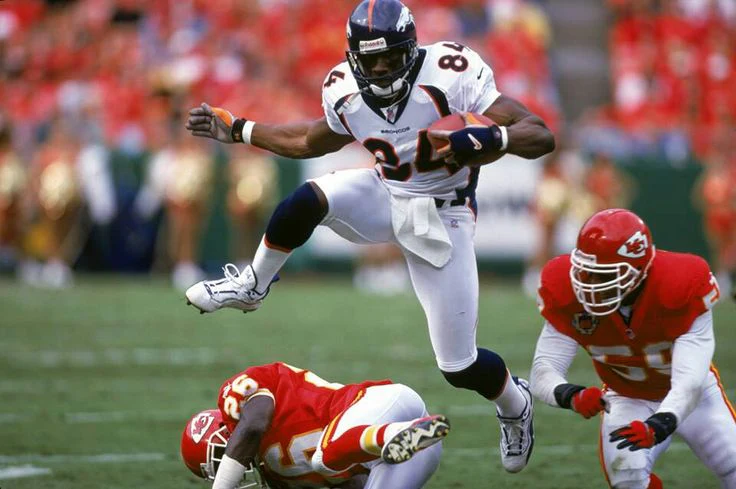Understanding the Role of a Tight End in Football
The tight end (TE) position in American football is one of the most versatile and crucial roles on the field. A tight end combines the responsibilities of both a receiver and an offensive lineman, making them essential to a team’s offensive strategy. This article explores the tight end’s role in depth, including their responsibilities, skills required, historical evolution, and notable players who have excelled in this position.
What is a Tight End?
A tight end is an offensive player who lines up next to the offensive tackles on the line of scrimmage. They are classified as “hybrid” players because they possess skills that allow them to perform multiple roles within an offense. Primarily, tight ends are responsible for blocking on running plays and catching passes from the quarterback during passing plays.
Key Responsibilities of a Tight End
The responsibilities of a tight end can be categorized into three main areas:
- Blocking: Tight ends are often called upon to block defensive players during both running and passing plays. They must be strong enough to handle defensive linemen and agile enough to pull or move in space to block linebackers or defensive backs.
- Receiving: Tight ends serve as valuable receiving options for quarterbacks. They typically run short to medium routes and are often targeted in critical situations, such as third downs or in the red zone.
- Ball Carrying: While not their primary function, tight ends occasionally carry the ball on designed running plays, particularly in trick plays or when they line up in the backfield.
The Evolution of the Tight End Position
The tight end position has evolved significantly since its inception. Initially, tight ends were primarily used as blockers. However, as the game has progressed, their role has expanded to include more receiving responsibilities. Here’s a brief overview of how the position has changed over time:
- Early Years: In the early days of football, tight ends were mainly used for blocking purposes and rarely caught passes.
- 1970s-1980s: With the advent of more sophisticated passing offenses, teams began utilizing tight ends as receivers more frequently.
- 1990s-Present: The modern tight end is expected to be a dual threat—capable of blocking effectively while also being a reliable target in the passing game.
Skills Required for a Tight End
To excel as a tight end, players must possess a unique combination of skills:
- Size and Strength: Tight ends are typically larger than wide receivers but need to be agile enough to run routes effectively. They must have the strength to block defensive players.
- Route Running: A good tight end must be able to run precise routes and create separation from defenders.
- Catching Ability: Tight ends should have reliable hands to catch passes thrown in traffic or under pressure.
- Blocking Technique: Effective blocking requires proper technique and footwork to engage defenders without drawing penalties.
- Football IQ: Understanding defensive schemes and knowing how to exploit mismatches is crucial for success as a tight end.
The Importance of Tight Ends in Modern Offenses
Tight ends play a vital role in modern offensive schemes for several reasons:
- Versatility: Their ability to block and catch makes them valuable assets in both passing and running situations.
- Mismatches: Tight ends can create mismatches against smaller defensive backs or slower linebackers due to their size and speed.
- Safety Valve: In high-pressure situations, tight ends often serve as safety valves for quarterbacks, providing reliable targets when primary receivers are covered.
- Red Zone Threats: Their height and catching ability make them significant threats near the goal line, where they can catch touchdowns over defenders.
Notable Tight Ends in NFL History
Several players have made significant impacts at the tight end position throughout NFL history:
| Player Name | Years Active | Team(s) | Notable Achievements |
|---|---|---|---|
| Mike Ditka | 1961-1972 | Chicago Bears | 5× Pro Bowl selection; Hall of Fame inductee |
| Kellen Winslow | 1979-1987 | San Diego Chargers | 3× Pro Bowl selection; known for receiving skills |
| Tony Gonzalez | 1997-2013 | Kansas City Chiefs, Atlanta Falcons | 14× Pro Bowl selection; all-time receptions leader among TEs |
| Rob Gronkowski | 2010-2021 | New England Patriots | 5× Pro Bowl selection; 4× Super Bowl champion |
| Travis Kelce | 2013-present | Kansas City Chiefs | Multiple Pro Bowl selections; Super Bowl champion |
Common Offensive Schemes Involving Tight Ends
Tight ends can be utilized in various offensive schemes depending on team strategy:
- West Coast Offense: This scheme emphasizes short passes and quick releases, making use of tight ends as safety valves for quarterbacks.
- Spread Offense: In this system, tight ends may line up wide or in motion to create mismatches against defenders.
- Power Running Game: Teams that focus on power running will often utilize multiple tight ends on the field to enhance blocking capabilities.
Challenges Faced by Tight Ends
Despite their importance, tight ends face several challenges:
- Injury Risks: Due to their involvement in blocking and receiving, they often endure heavy hits that can lead to injuries.
- Complex Playbooks: Tight ends must understand multiple roles within an offense, which requires extensive knowledge of playbooks and schemes.
- Competition for Targets: With multiple receiving options available (wide receivers and running backs), tight ends may find themselves competing for targets during games.
Conclusion
The role of a tight end is multifaceted and critical within an NFL offense. As hybrid players who combine blocking skills with receiving abilities, they contribute significantly to both passing and running plays. With evolving strategies in modern football, the importance of tight ends continues to grow, making them indispensable assets on any team.
Frequently Asked Questions (FAQ)
1. What does a tight end do?
A tight end primarily blocks for running plays and catches passes from the quarterback during passing plays.
2. How is a tight end different from a wide receiver?
While both positions catch passes, tight ends are generally larger and also serve as blockers on running plays, whereas wide receivers focus primarily on receiving.
3. Can a tight end carry the ball?
Yes, although it is not their primary responsibility; they may carry the ball during specific plays designed for them.
4. What skills are essential for a successful tight end?
Key skills include size and strength for blocking, route-running ability, catching proficiency, blocking technique, and football intelligence.
5. Who are some notable NFL tight ends?
Notable players include Mike Ditka, Kellen Winslow, Tony Gonzalez, Rob Gronkowski, and Travis Kelce.For more detailed information about football positions including tight ends, you can refer to Wikipedia on American Football Positions.



